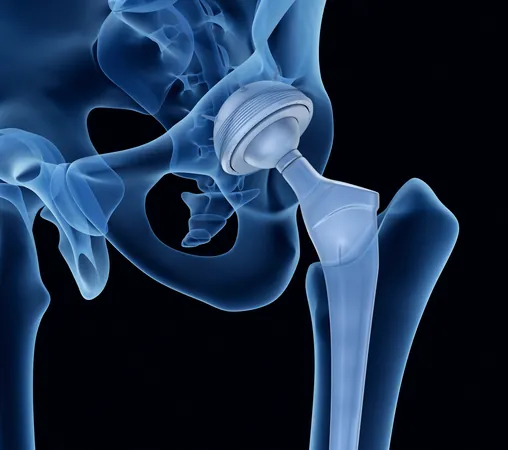
Groundbreaking 3D-Printed NiTi Bone Scaffolds Set to Transform Regenerative Medicine
2025-09-03
Author: Sarah
Revolutionary 3D-Printed Scaffolds Achieve Unmatched Flexibility
Researchers at City University of Hong Kong have made a monumental leap in regenerative medicine by developing 3D-printed nickel-titanium (NiTi) bone scaffolds. These innovative implants boast an impressive 6-7% flexibility, perfectly mimicking natural bone and surpassing the capabilities of traditional implants.
A Game Changer for Bone Repair
Using cutting-edge laser powder bed fusion technology, the team has created scaffolds that not only recover from deformation but also offer tunable strength and porosity. This breakthrough could potentially change the landscape of bone repair, offering new hope for patients seeking effective treatment options.
A Booming Market for Artificial Bone Implants
The artificial bone implant market is booming, with expectations of reaching a staggering market value of $64.27 billion by 2030. This surge underscores the urgent need for advanced bone scaffolds that meet the complexities of human anatomy.
Experts Weigh In on the Need for Improved Scaffolds
Professor Jian LU, the leading researcher, emphasizes the critical role of artificial bone scaffolds in personalized medicine. "Current scaffolds don’t adequately mimic the unique properties of natural bone, which is essential for successful implantation and recovery," he notes, highlighting the limitations of traditional metal options.
The 3D Printing Advantage
While NiTi alloys have long been celebrated for their biocompatibility and deformation recovery, traditional manufacturing methods struggle with the complex geometries required for effective bone scaffolding. 3D printing emerges as a solution, offering flexibility in design and performance optimization.
Enhancing Superelasticity Through Innovation
By leveraging laser powder bed fusion, the researchers have crafted scaffolds with unique microstructures that significantly improve superelasticity. These scaffolds exhibit a remarkable recoverable strain of 6-7%, exceeding the deformation behaviors of traditional scaffolds which typically can only achieve up to 4%.
Tailoring Scaffolds to Meet Diverse Needs
The team's innovative approach combines advanced design strategies to enhance the scaffolds' adaptability for various implantation sites. Shiyu ZHONG, a PhD student involved in the research, emphasizes their potential: "Our NiTi scaffolds offer properties that are more closely aligned with natural bone, better suited for varying clinical needs."
Future Directions in Research
Looking ahead, researchers aim to explore the biocompatibility and durability of these pioneering scaffolds, ensuring their safety and effectiveness in clinical applications. As the demand for reliable bone repair solutions continues to rise, this breakthrough could be just the beginning.




 Brasil (PT)
Brasil (PT)
 Canada (EN)
Canada (EN)
 Chile (ES)
Chile (ES)
 Česko (CS)
Česko (CS)
 대한민국 (KO)
대한민국 (KO)
 España (ES)
España (ES)
 France (FR)
France (FR)
 Hong Kong (EN)
Hong Kong (EN)
 Italia (IT)
Italia (IT)
 日本 (JA)
日本 (JA)
 Magyarország (HU)
Magyarország (HU)
 Norge (NO)
Norge (NO)
 Polska (PL)
Polska (PL)
 Schweiz (DE)
Schweiz (DE)
 Singapore (EN)
Singapore (EN)
 Sverige (SV)
Sverige (SV)
 Suomi (FI)
Suomi (FI)
 Türkiye (TR)
Türkiye (TR)
 الإمارات العربية المتحدة (AR)
الإمارات العربية المتحدة (AR)